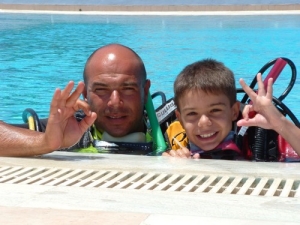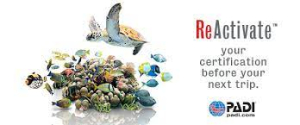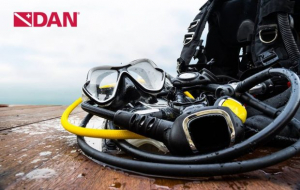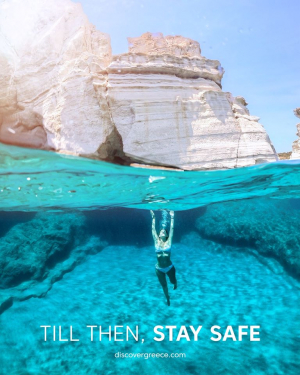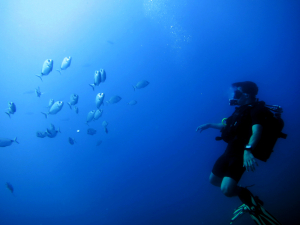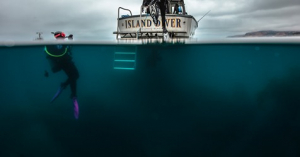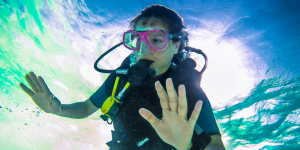If you’ve always wanted to experience the world beneath the waves, a PADI® Open Water Diver certification is your passport to adventure. Here’s a primer on what getting certified is all about and what to expect in the PADI Open Water Diver course. A PADI Open Water Diver certification card, allows you to: (more)
Tassos Marinos
Bubblemaker / Private (pool and sea dive/over 8 years old)
Bubblemaker course (over 8 years old)
The PADI Bubblemaker program is designed for boys and girls aged 8 and older. It’s fun, easy, and safe! The PADI Bubblemaker is a great way for youngsters to join in on family scuba diving adventures or even start a trend of their own. While children should feel comfortable in the water, they don’t need to be expert swimmers, as the maximum depth is only 2 meters.
Padi ReActivate Scuba Refresher Program
Why Reactivate?
Haven’t been diving for some years and want a quick scuba refresher? The ReActivate™ program is the perfect way to update your dive skills and knowledge from the PADI Open Water Diver Course before jumping back into the water. Whether you want a few reminders or need to go over the basics, ReActivate is personalized for you: You conveniently review scuba concepts on your tablet, mobile device or computer, then go diving with a PADI Professional. It’s quick and easy, and a good way to prepare for your next PADI course or get ready for a diving vacation.
You can combine it with our Package of two private dives, preferably not in the same day
Private Family Plan / Package of 2 private sea dives for certified divers (two shore dives in the same day, incl full equipment)
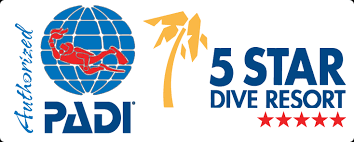
Family plan. Package of 2 private sea dives for certified divers (in the same day, incl full equipment, private guide)
Our private dive guide service offers flexible scheduling and can be booked for you and your dive buddy, or for the whole family. This personalized service ensures you make the most of your holiday. At Kos Divers, we provide private dive experiences that help you improve or refresh your diving skills in a uniquely tailored way. Our dive center is conveniently located by the sea, with a dive site teeming with marine life, including fish, octopus, and more. The crystal-clear water offers excellent visibility. The maximum depth of the dive site is 17 meters, but we can adjust to shallower depths based on your preferences. The package includes two dives and takes about 3 hours, leaving you plenty of time to enjoy the rest of your day.
Why Private Family plan? (min 2 persons)
With our Private Family Plan, you receive extra care and attention beyond the standard group dive experience.
The cost of a private dive is small compared to the significant benefits. The Private Family Plan is perfect for:
- Families, couples, or friends who want a private dive without joining a group
- Parents diving with their children
- Less confident or inexperienced divers
- Divers who haven’t dived in a while
- Underwater photographers who need extra time
- Divers with physical challenges requiring special care
- Those who use more air and want to work on improving their air consumption
- Couples looking to share a unique dive experience together
Dive site
Our dive center is located right by the sea, offering direct access to a local dive site with clear, crystal waters and excellent visibility. The maximum depth ranges between 17 and 18 meters. The site is rich in diverse marine life, including octopuses, rockfish, scorpionfish, nudibranchs, schools of bream, triggerfish, stingrays, lionfish, and much more.
Shore diving is an affordable and flexible way to explore the underwater world, without the need for boat logistics.
It’s ideal for any time of the day, and our site is perfect for all levels of divers—whether you are training, refreshing your skills, or are an advanced diver.
The dive begins with a slow, easy entry from the beach to a sandy plateau between 0–5 meters, offering calm, pool-like conditions.
This is an ideal spot to practice breathing, swimming, and buoyancy, especially for novices or those who haven't dived in a while.
A short swim from this plateau, you’ll find a gentle slope leading down to a second plateau at 12–17 meters.
Here, you can find replicas of Greek statues on the seabed, a unique and scenic spot for underwater photography.
The seafloor is a mix of sand, rock, seagrass, and Posidonia oceanica fields, supporting an unexpectedly rich variety of marine life for a shore dive.
Marine Life in Kos
Typical marine life you might encounter includes octopuses, rockfish, scorpionfish, nudibranchs, schools of bream, triggerfish, stingrays, lionfish, and more. Occasionally, you might spot amberjacks, small tunas, or Mediterranean barracudas hunting in the blue. Some species are unique to our waters, while others are Lessepsian immigrants from the Red Sea.
Review package / pool review and a fun sea dive for certified divers (full equipment)

Review package - pool review and a fun sea dive for certified divers (full equipment)
You are a certified diver but haven’t been in the water for a while? You feel that your diving skills got a bit rusty? Refresh your skills with this program and you will feel confident in the water again in no time. During this refresher course one of our instructors will update your knowledge and basic diving skills in the pool so you can go after for a fun sea dive and enjoy it with safety. You will go through the steps of assembling your scuba equipment and how to complete a pre-dive safety check. During the pool dive, some basic scuba skills will be practiced focusing on the areas the student feels the least confident and would like to refresh.
After an hour break it will follow a dive at our local dive site which is full of different fish, octopus and more with crystal water and very good visibility!
The program is ideal for
- not dived for a while
- not confident divers
- inexperienced divers
- divers lacking confidence
Dive site
Our dive center is based just next to the sea. Our local dive site is full of different fish, octopus and more with crystal water and very good visibility at max depth 17m.
Shore diving is an affordable and adventurous way to explore the underwater world. The appeal of shore diving is often its flexibility and convenience without the need for boat logistics, the sites can be visited at most times of day.
Our dive site is ideal for all sorts of dive training, novices, divers who need refresh and advanced divers.
Slow and easy entry from the beach, where we meet a sandy flat plateau from 0-5m depth, pool like conditions, where we can practice our breathing, swimming and buoyancy which is important and safe for novices and divers who haven't dived for a while.
Less than 5 min swimming from our entry point and passing the plateau is following a slow and gentle slope up to 12-13 m where we meet a second plateau up to 17-18m deep. There among others you can see replicas of Greek statues standing on the seabed, an excellent spot for photos.
The dive site bottom is composed of sand, rock, sea grass and Posidonia oceanica fields. The underwater life is surprisingly rich for a shore dive.
Typical aquatic life while scuba diving in Kos: octopus, rockfish, scorpion fish, nudibranchs, macro life, schools of fish, all kinds of breams, triggerfish, stingrays, cuttlefish, small groupers, lionfish and much more.
Occasional sightings of amberjacks hunting out in the blue, small tunas and Mediterranean barracudas.
Some species that you will be able to observe are unique to our sea (endemic species) and some of them Lessepsian immigrants from the Red sea.
Reopen!
Hello fellow scuba divers,
As Greece begins to form a plan to reopen tourism (Kos airport reopens 1st of July) we see there is a lot of interest from many divers!
With the safety of our guests and staff being our top priority we will be following the latest Padi and DAN recommendations for social distancing as we resume operations.
Protocols for distancing, disinfection, medical evaluations and other COVID-19 issues have been posted by DAN (Divers Alert Network) and UHMS (Undersea Hyperbaric Medical Society). We are following best-practices and all their webinars to get ready! Safety is job one at every PADI shop, and COVID-19 is no exception.
We look forward to seeing you and getting back to the business of serving our guests and providing exceptional services.
Till then-Stay safe
Kos Divers
COVID-19 Update. Planning ahead - we'd like to make it easier for you!
Hello fellow scuba divers,
There’s no need to repeat how unprecedented the Covid 19 pandemic is. The effects are everywhere. We hope your family and friends are all fine.
As a part of the global travel community, we’ve been following recent news of the Coronavirus (COVID-19) incredibly closely. Most importantly, our thoughts are with all those affected, be it directly or indirectly.
When participating in our activities, your safety remains our highest priority.
We’ve always provided safe and clean environments for our guests and we remain committed to upholding the highest standards of cleanliness. Our rental equipment is disinfected and sanitized on a regular basis. High touch areas in our diving center are being cleaned more frequently each day.
To assist you in booking with confidence, we do allow you to reschedule your reservation until October 2022. Just contact us 5 days before your scheduled dive activity.
Please be informed that if you decide to cancel your booking we do need to apply our regular cancellation policy at time of your booking
Till then-Stay safe
Kos Divers
season 2020 opening day
Keeping diving skills fresh
So you got your dive qualification — now what? Here’s how to keep those newly acquired dive skills fresh.
You finally completed your dive course and are ready to dive exotic — and even not-so-exotic — dive locations. Once divers are qualified they seldom think about keeping their dive skills fresh but it is something that should all do.
Dive skills, like anything else, become rusty over time. Have you ever tried playing the musical instrument you mastered in high school after years of letting it collect dust in the closet? Or speaking a language that you were once fluent in after a long time of not speaking it?
We use some skills often, like mask clearing and buoyancy control. You may not have practiced other skills since your training — think navigation and emergency skills like alternative air-source use and performing a Controlled Emergency Swimming Ascent (CESA), or even assembling and disassembling your dive gear.
While people with more dives under their (weight) belts might need little time in the water to finely tune their skills, someone who has done less dives, such vacation divers who complete 20 dives in three years, will need more practice to remember their skills.
Keep in mind that no matter how long you’ve been a diver that if you’re not actively practicing your skills, you’re not staying on top of them. During your course you might have practiced them until it was ingrained in your muscle memory, but after some time of disuse, we tend to forget what we’ve learned.
Practice makes perfect
Dive, dive, dive. Getting into the water and diving is the best way to improve your skill and keep them fresh. Spending some time in the water with an experienced diver or — better yet — a dive professional, will help you not only practice the skills but also avoid picking up bad diving habits.
How do you know your skills are adequate and current? Ask yourself whether you and your buddy can perform all the skills for the dive that you are about to do. That includes everything from mask skills to navigation and emergency procedures.
Your dive skills are the key to making you a safer diver. Competence makes you more comfortable in the water, helps you avoid pre-dive anxiety and, ultimately, adds to your enjoyment of the sport. Keeping your skills up to date by practicing is the best way to ensure that you keep enjoying every dive experience. You may also want to consider a rescue course, even if you don’t intend to pursue diving professionally.
A final reminder: If you are not enjoying yourself, you are doing it wrong, even if you are just practicing some skills in the pool. Have fun with your skills training and diving will be more enjoyable all around.
source: Scubadiverlife.com - Juanita Pienaar
How to become a certified Padi Diver. Everything you want to know
What exactly happens to your body and mind when you experience a scuba-related panic episode. And how can you regain control?
By Juanita Pienaar/ scuba diver life
Diving is fun, adventurous, often exhilarating and often meditative. But there’s a darker side of diving as well, which we often gloss over with phrases like “in the unlikely event,” and “Stop. Breathe. Think. Act.” During my diving career I have experienced everything from a slight anxiety to full-on panic episodes. As an instructor, I have seen students and fun divers in similar situations. While some people can bring themselves back from the edge, others escalate to a full panic experience. I remember some of my very first dives, when I was right on the edge of panic but unable to speak out about it because of how I thought others would perceive me. So let’s talk a little bit about a scuba-related panic episode and what you can do to bring yourself back from the brink.
In 2003, the Undersea Journal published research by David and Lynn Colvard on panic among recreational scuba divers. The study states that researchers think that a panicked response to stress plays a large role in dive fatalities. Alfred Bove, author of Medical Examination of Sport Scuba Divers, echoes this sentiment: “panic, or ineffective behavior in the emergency situation when fear is present, is the single biggest killer of sport divers.” Unfortunately, we cannot know this for sure, but what do we know about panic and diving?
What does the research say?
The Recreational Scuba Training Council’s (RSTC) 1998 guidelines for the recreational scuba diver’s physical examination listed ‘a history of panic disorder’ as a no-go zone for divers. This means that individuals with a history of panic disorder were deemed medically unfit to dive. In 2001, the guidelines changed to include a ‘history of untreated panic disorder’ as a high-risk condition for diving, but also acknowledged that with treatment, such conditions pose a lower risk to diving activities.
What causes panic attacks?
First, we need to define a panic attack. For their research, the Colvards defined it as “an intense fear of losing control or dying.” They linked this to the definition of a panic attack found in the 5th edition of the Diagnostic and Statistical Manual (DSM) of Mental Disorders, which defines an attack as “a discrete period of intense fear or discomfort that is accompanied by at least four of 13 somatic or cognitive symptoms…often accompanied by a sense of imminent danger or impending doom and an urge to escape…or desire to flee from wherever the attack is occurring.”
For divers this could turn into an uncontrolled ascent or other kind of flight response. The Colvards found that 15 percent of divers who experience their first panic while diving engaged in a rapid or uncontrolled ascent. While this number seems relatively low, it is based on a survey of current divers. To date there is no information on how many divers stopped diving due to experiencing panic. We also cannot establish how many diving fatalities panic has caused. Investigators often label these cases as drowning deaths, with little information on the events leading up to the incident.
Who is at risk?
Women, and especially women who have a history of panic attacks, tend to experience more panic attacks than men. On the other hand, the men who participated in the Colvards’ research viewed their first panic during a dive as life-threatening. They also found that women tend to accept help more often than men and attribute this to the possibility that in many cultures men are conditioned to be self-reliant.
People who have a history of panic attacks above water are about twice as likely to panic while diving as those who have never experienced a panic attack before. They are also more likely to have more than one panic experience while diving.
Triggers are unique to every individual. We do know that it is not dependent on when you last dived or on your certification level.
How can you address scuba-related panic?
Happily, the Colvards found that most divers who had experienced a panic episode while diving remembered and used their training on how to deal with the situation. They also found that most divers who experienced a panic situation while diving went for additional training afterwards.
Panic happens when an individual does not have any solutions for a serious problem. The quality of training will help provide divers the skills they need in these situations. Repeating and practicing skills to become familiar with them can change the way a diver reacts in a panic situation as well. Furthermore, by continuing their education, divers increase their available skills, which they can rely on if they do feel panicky.
How to recognize a panic attack
A panic is a distinct episode of fear and discomfort with four or more of the following symptoms present. They develop quickly and peak in about 10 minutes:
- palpitations, pounding heart, or accelerated heart rate
- sweating
- trembling or shaking
- sensations of shortness of breath or smothering
- feeling of choking
- chest pain or discomfort
- nausea or abdominal distress
- feeling dizzy, unsteady, lightheaded or faint
- derealization (feelings of unreality) or depersonalization (being detached from oneself)
- fear of losing control or going crazy
- fear of dying
- paresthesias (numbness or tingling sensations)
- chills or hot flashes


